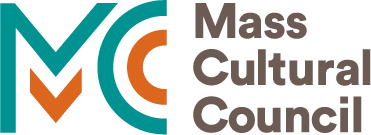A whirlwind tour via Brad Shur’s “Introduction to Puppetry Arts”
By Guest Blogger, Holly Hartman, Volunteer Media Consultant

In the past, I’ve brought children to a range of enchanting shows at the
Puppet Showplace; since becoming a volunteer, I’ve been wowed by its programming for adults. Boundary-pushing Puppet Slams with excellent live music, touring theater companies, evening classes for puppet fans at every level of experience—all this is available right here on Station Street, along with a glimpse into New England’s thriving puppetry arts community.
One of the highlights of my autumn was taking an
adult education course at Puppet Showplace: Introduction to Puppetry Arts, taught by
Brad Shur, the theatre’s Artist in Residence.
Week One: Learning by Doing
At our first meeting, Brad demonstrates the basics of puppetry performance with an instant “tabletop puppet”: a plastic bag twisted into the shape of a bird. Thanks to his skill, this weightless creature is strangely convincing. Its chest heaves with breath, suggesting emotion; it looks around at us, suggesting thought; the effort of its slow movement across the table suggests muscle. Minutes into the course, I’m hooked.
Next, Brad passes around a variety of puppets. In trying them out, I realize that puppetry may be the epitome of hands-on learning. Playing with a George Bernard Shaw glove puppet built by Puppet Showplace artist emeritus Paul Vincent Davis shows me how its shoulder joints flex as well as where its eyes focus in space, neither of which is evident from the outside. In using a Red Riding Hood puppet made by Puppet Showplace founder Mary Churchill, I learn that her trademark crochet material moves sinuously with the hand, while the character’s weighted boots fall authoritatively on the table. I see that if you spent time with these puppets, they would teach you how to operate them.
 |
| Brad Shur (center) Puppet Showplace Artist in Residence with Introduction to Puppetry Arts class. |
The remainder of the class is given to puppetry history, some lip-synch practice with the eyeball puppets known as “Peepers,” and, finally, building a box-shaped mouth puppet from construction paper. This activity will pretty much characterize my experience of the class: a hands-on approach to education that offers a lot of fun in a little time, as well as a lesson in how effective simple materials can be.
Week Two: History in Motion
This time class starts in the theater, where we watch a riveting series of video clips of iconic puppetry: old (Vietnamese water puppets) and new (animatronics), simple (naked hands) and complex (Bunraku), analytical (Burr Tillstrom’s Berlin wall piece) and magical (the giant marionettes of Royale de Luxe). I’ve seen photographs of some of these performance styles on the Puppet Showplace
Pinterest boards, but to see them in motion is an utterly new experience, enhanced, like everything in this class, by Brad’s insightful commentary.
For the remainder of the evening, it’s back to the art table to create shadow puppets. Once again, simple materials do the trick. Using cut paper and a brass fastener for a hinge, each of us makes a creature with one moving part. Around the table, paper tails wag and tiny jaws flap.
Week Three: Taking the Stage
We return to the theater, where each of us takes our shadow puppet onstage behind a lit screen, then trades with another student so we can see our own puppet in action. A vaulted turtle drifts down from above, toward the light, then inches its head out of its shell; an elephant undulates its jointed trunk as it struts across the scrim.
One thing that strikes me about our shadow puppets is how expressive the outline of each one is, as individual as handwriting. Also, they are all captivating onstage. Brad points out that this is the only form of puppetry that doesn’t depend on a puppeteer’s skill in bringing the object to life, but instead makes use of the magic of light and shadow. Immediately I start pondering whether I can fit Shadow Puppetry 101 into my schedule this fall. (I can’t, alas—but the course will return next year.)
Next, we begin building rod puppets—using a rod, of course, along with balled-up newspaper wrapped by masking tape, a surprisingly malleable combination of materials. I lose track of what my classmates are doing as I form a pear-like rabbit head and hunchbacked rabbit body. When I look up, I see that the population of the class has doubled: every human is now accompanied by a rustic creature in process.
Week Four: Lights, Puppets, Action!
I’m thrilled to see my half-completed rod puppet again after a week apart. The room fills with the sound of newspaper crumpling and masking tape tearing as we finish building the bodies, then give our puppets rod-operated arms that swivel at the shoulder and bend at the elbow. With these points of motion, plus a turnable head, we have a crew of what Brad calls “robust” puppets, capable of a range of movement—and possibility.
This evening, those possibilities play out via fairy tales. We pair off and use our diverse cast of characters to retell classic stories: in my case, a rabbit and a snowman perform an unorthodox version of the Frog Prince. Working on the puppet stage is a ton of fun, though I can’t quite see what my rabbit puppet is doing through the thin black fabric that conceals our faces. No matter; I can hear the audience laugh.

I took this class hoping to learn more about the history and practice of puppetry, which I did; what I didn’t expect was to spend so much time building and using puppets, which was wonderful. As I walk up Station Street at the end of the evening, two people smile at me; I turn onto Harvard Street, and a little girl at a bus stop grins and clasps her hands. That’s when I remember that I’m holding a two-foot-long floppy-eared rabbit on a stick. I am sorry that the class is over, but I can already tell that it is a gift that will keep on giving.
To learn about upcoming adult classes,
click here.
























